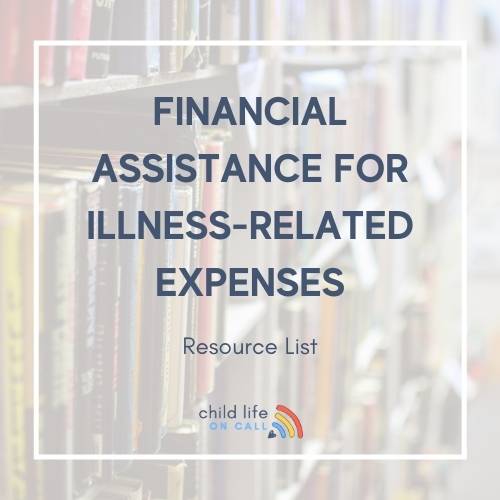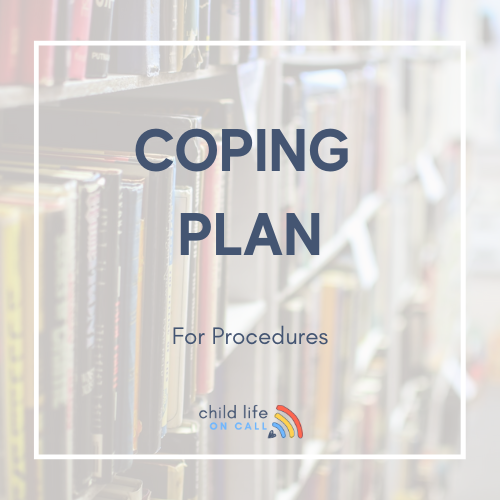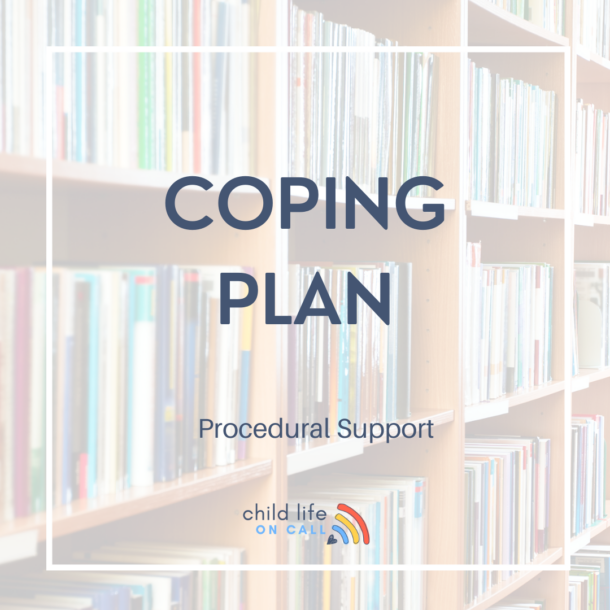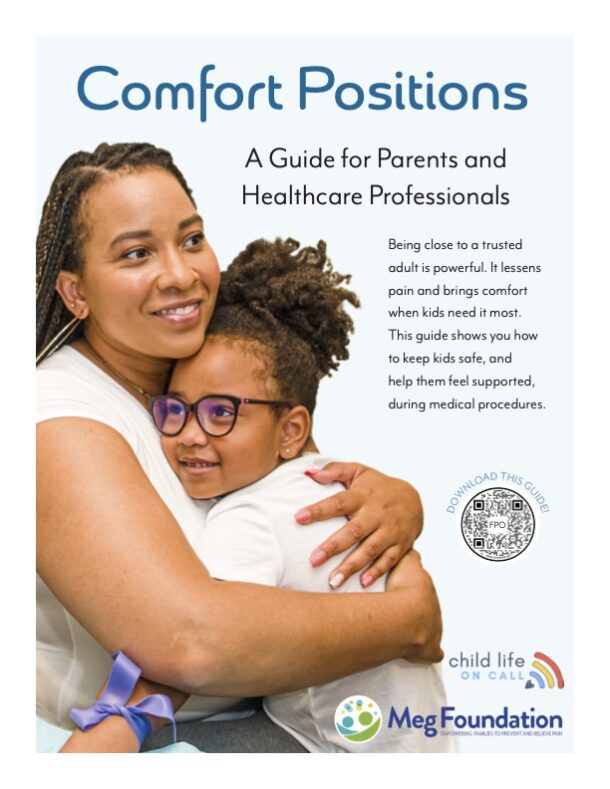Comfort positioning in pediatrics is an important topic for parents to understand because it is an alternative to the traditional technique of holding children down for procedures.
As a child life specialist, I have seen firsthand the benefits that comfort positioning can have for children in medical settings. In this blog post, I’ll explain what comfort positioning is, how it works, and why it’s effective. We’ll also talk about scenarios in which comfort positioning does not work, and how you can address alternative options for comforting your child.
What is comfort positioning?
Comfort positioning is a technique used by healthcare providers to help children feel more comfortable during medical procedures. It can involves positioning the child in the lap of or next to their parent, or in alternative way that is comfortable and calming, while also providing access to the area of the body that needs to be treated.
For example, if a child needs to receive an injection in their arm, a healthcare provider may use a “back to chest” or “tummy to tummy” comfort position to help the child feel more supported and less anxious. This might involve positioning the child with their parent, in a comfortable chair or bed while providing a distraction such as a toy or a tablet, as well as gently holding the child’s arm in a way that is both secure and comforting.
If you haven’t already, go ahead and download our comfort positioning guide made in collaboration with the Meg Foundation for Pain.
How does comfort positioning work?
Comfort positioning works by reducing a child’s anxiety and discomfort during medical procedures. When children feel anxious or stressed, their bodies release stress hormones like cortisol and adrenaline. These hormones can cause a range of physical symptoms, including increased heart rate, elevated blood pressure, and shallow breathing.
By using comfort positioning to help children feel more relaxed and calm, healthcare providers can reduce the release of stress hormones and minimize the physical symptoms associated with anxiety. This can make medical procedures less traumatic for children, and can also help to improve their overall healthcare experience.
Why is comfort positioning effective?
Here’s some of the research:
Children who are restrained during medical interventions have negative experiences (Karlson, 2016).
Studies show that children who sit upright during a medical procedure, such as an IV, exhibit less distress by promoting the child’s sense of control throughout their experience (Trottier, et. al., 2019).
Comfort positioning can enhance cooperation and provide an active role to caregivers (Skaljic, 2020).
When implementing comfort positions, it generally requires requires less staff presence, improves parent satisfaction and decreases parent anxiety (Romito, et. al., 2021).
What are parents saying?
In a literature review, 15 studies found that all parents preferred to have a choice about whether or not they could be present during medical procedures. Ninety- four percent of parents who were present throughout their child’s procedure stated that they would elect to remain present again in the future (Meehan, 2020).
Karlson K, Darcy L, Enskär K. The use of restraint is never supportive (poster). Nordic Society of Pediatric Hematology/Oncology (NOPHO) 34th Annual meeting 2016 and 11th Biannual Meeting of Nordic Society of Pediatric Oncology Nurses (NOBOS); May 27–31, 2016. Reykjavik, Iceland. [Ref list]
Meehan, C. (2020, July 10). Parental presence during procedures — brown emergency medicine. Brown Emergency Medicine. http://brownemblog.com/blog-1/2020/5/27/parental-presence-during-procedures
Romito, B., Jewell, J., Jackson, M., & AAP COMMITTEE ON HOSPITAL CARE; ASSOCIATION OF CHILD LIFE PROFESSIONALS. (2021). Child life services. Pediatrics, 147(1), e2020040261. https://doi.org/10.1542/ peds.2020-040261
Skaljic, M., McGinnis, A., & Streicher, J. L. (2020). Comfort positioning during procedures in pediatric dermatology. Pediatric Dermatology, 37(2), 396–398. https://doi.org/10.1111/pde.14089
Trottier, E. D., Doré-Bergeron, M.-J., Chauvin-Kimoff, L., Baerg, K., & Ali, S. (2019). Managing pain and distress in children undergoing brief diagnostic and therapeutic procedures. Paediatrics & Child Health, 24(8), 509–535. https://doi.org/10.1093/pch/pxz026
You can listen to Katie Taylor, CCLS, Jody Thomas, PhD, LCSW, and Jamie Gentille, MPH, CCLS talk about pain in pediatrics in this podcast episode:
When would comfort positions not be appropriate?
While comfort positioning is generally a safe and effective technique for reducing anxiety and discomfort in children during medical procedures, there may be some situations where it may not be appropriate. However, there are alternative options that can still increase comfort for both mom and child which are also explained.. For example:
- In some complex and sterile medical procedures, it may be necessary to restrict a child’s movement or position them in a specific way to ensure their safety or the effectiveness of the procedure. In such cases, the position may not be possible or appropriate.
- What is appropriate? Offering choices to the child about environmental factors such as lights, sound and people in the room. Providing preparation for what the child will experience. Encouraging parents to take an active role in comforting and soothing their child. Talking with your healthcare provider about medications that can reduce anxiety.
- If a child has a medical condition that affects their ability to move or maintain a certain position, the comfort position may need to be modified.
- What is appropriate? Offering choices to the child about environmental factors such as lights, sound and people in the room. Providing preparation for what the child will experience. Encouraging parents to take an active role in comforting and soothing their child. Talking with your healthcare provider about medications that can reduce anxiety.
- If the parent is not present, or unwilling to participate. Another caregiver or staff member can build rapport and offer the option for comfort positioning.
- What is appropriate? Offering choices to the child about environmental factors such as lights, sound and people in the room. Providing preparation for what the child will experience. Encouraging parents to take an active role in comforting and soothing their child. Talking with your healthcare provider about medications that can reduce anxiety.
- Some children may find comfort positioning to be uncomfortable or distressing, in which case alternative strategies may need to be explored.
- What is appropriate? Offering choices to the child about environmental factors such as lights, sound and people in the room. Providing preparation for what the child will experience. Encouraging parents to take an active role in comforting and soothing their child. Talking with your healthcare provider about medications that can reduce anxiety.
It’s important to discuss with your child’s healthcare provider about whether this technique s an appropriate position for your child’s specific medical situation. Healthcare providers can help to assess whether comfort positioning is safe and effective, and can work with you to identify alternative strategies if necessary.
Overall, the evidence suggests that comfort positioning is a safe, effective, and relatively low-cost technique that can help to improve the healthcare experience for children.
As a child life specialist, I have seen firsthand the benefits of comfort positioning for children in medical settings. By using this technique, healthcare providers can help children feel more relaxed, calm, and comfortable during medical procedures, which can ultimately lead to better healthcare outcomes. If you have concerns about your child’s healthcare experience, consider talking to your healthcare provider about the possibility of using comfort positioning to help your child feel more comfortable and at ease.
For more information about pain in pediatrics, we highly recommend the Meg Foundation for Pain who was a collaborator on the Comfort Position Guide.













